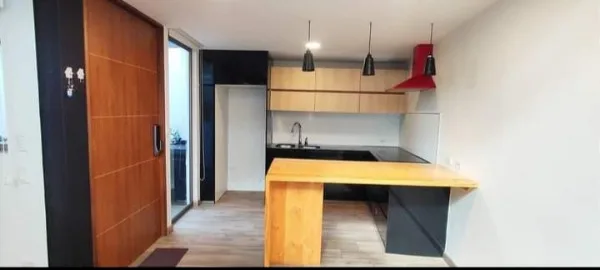Bird watchers’ paradise: Take a tour through Jocotoco Foundation’s nature preserves in southern Ecuador
Editor’s note: This is the third of a four-part series “Saving the World – One Ecosystem at a Time.” Next, Article 4: “The human dimension of successful conservation.”
By John Keeble
The beauty of nature affects people deeply – especially Ecuador’s rare and stunning birds.
“I have seen people cry with real joy when they see a bird,” said guide and birder Juan Carlos Figueroa as he showed me the delights of southern Ecuador conservation reserves.

The purple-throated sunangel is one of the bird species that Fundación Jocotoco helps to protect in its preserves.
“More women than men cry, but I’ve cried. You feel like you are the most privileged person in the world to see that,” he said.
And I did see birds so wonderful that I could not take my eyes off them – an old news hack finally seeing the light as an accidental birder.
Fundación Jocotoco has spent 25 years saving endangered birds and their threatened ecosystems. These are some of them in southern Ecuador:
Yunguilla: I joined Ranger Angel Otavalo for a walk through the seasonally dry landscape, crossing a river that was no more than a trickle but, in the rainy season, rages through the reserve. He stopped to show me plants and point out aspects of the landscape. Every now and again he raised his binoculars to scan the reserve for anything untoward.

Yunguilla reserve’s Ranger Angel Otavalo – always ready to show the reserve
There were high places, where he walks on his own, but visitors usually stick to the easy track from the entrance to a lower point where he feeds a few birds while most live well in their natural forest ways. His regulars know him and before long they are hopping through the underbrush to keep pace with him.
Then we saw, nearby and clear, a bird that would have become extinct in the area without Jocotoco’s intervention: the pale-headed brush finch, which birders will cross continents to see.
Angel, gentle in manner and speech, lives up to the meaning of his name as the messenger between this world and the world of spirits, though in his case it is the world of nature.

Cerro de Arcos reserve – a life-saving sanctuary
He has encouraged local farmers to stop letting their cows onto the reserve – they eat the undergrowth that supports the now-growing population of pale-headed brush finches. Less farming in surrounding areas has helped the finches, too. It has reduced the population of shiny cow birds, which lay their eggs in other birds’ nests.
Jocotoco would like to buy more land to extend the reserve but prices have been rising steadily as people move away from towns and Cuenca people use warm Yunguilla as a second-home retreat. The building boom takes land for construction and the new owners tend to replace endemic vegetation with ornamental plants.
The pale-headed brush finch was thought to be locally extinct for 20 years but in 1998 a small population – estimated at between five and 15 – was found, and that triggered Jocotoco to buy the land for the reserve. Now, an estimated 100 breeding pairs live there.

Community benefits – Fredy Carlos Pineda, living near Cerro de Arcos reserve, tells of the hopes of local residents.
Cerro de Arcos: The thin line between life and extinction was startlingly apparent as we walked over the high, wind-swept grassland and looked down at the tiny sanctuary of the blue-throated hillstar hummingbird, one of the rarest hummingbirds in the world.
We had driven up through a cold and open landscape, a sprinkling of homes here and there with red-faced people wrapped up warm against the biting wind. Higher still was a huge hill scarred and brown – the commercial monoculture tree growers were harvesting their pine trees crop.

The rainbow starfrontlet hummingbird found in Jocotoco’s reserves
Finally, at the top, around 3,500 meters, we left the car and walked over protected grassland towards a sharp drop off … and looked down on the trees and chuquiragua flowers vital to the survival of the blue-throated hillstar.
We hiked down, quietly and gently. A few meters away from us, a blue-throated hillstar perched unconcerned on a branch. We watched it until it had seen enough of us and flew away for more interesting diversions.
Local communities are beginning to see, with Jocotoco’s help, how the reserve can help them economically by attracting visitors to the area. As we drove up, we stopped at one tiny community, Sabadel, where resident Fredy Carlos Pineda chatted about how he would like to engage in ecotourism to earn money. In the nearest town, Manú, leaders are working out what to do after Jocotoco gave them a presentation on possibilities.

Ecotourists want cultural interactions as well as contact with nature.
Buenaventura: This magical place offered so much in itself and as a base for day visits to other reserves. My first introduction to reserve birds were three toucans feeding on the edge of the lodge’s veranda a couple of meters from a constant firework display of hummingbirds taking their nourishment.
Later, Chief Ranger Leo Cabrera and his wife Eva Sarango, in charge of community projects, led the way to where the 9,271-acre tropical rainforest reserve is rebuilding the endangered population of el oro parakeets.

Buenaventura reserve – Chief Ranger Leo Cabrera explains the reserve’s el oro parakeets success.
Deep in the hills, past a derelict hacienda, Cabrera explained about the parakeet nesting boxes project. “After the parakeets were found, it was discovered that this area was important for breeding and roosting,” he said.
“Much of the area was pasture and there were no places for them to nest and roost. They need old trees with holes. They had nowhere suitable to breed and they were open to predators.”
Rangers put up nesting boxes, widely spread because concentration would have made the parakeets more vulnerable to predators. Weasels, toucans, rodents, and snakes snack on the eggs and the chicks.
We looked high up a tree where a box was fixed. No one seemed to be at home – but the box has been one of the most successful for breeding pairs. Parakeets are social breeders and several pairs will share a box and all feed the chicks. Six to 13 eggs at a time have been counted in boxes.

Rangers take care to monitor everything in the reserves.
Work to save the parakeets did not stop at putting up the 73 nesting boxes. The birds needed to find enough food and natural cover, which meant the largely devastated land had to be replanted with the right trees and plants to enable a population to thrive.
The parakeet population has grown from between 200 and 300 individuals 10 years ago to more than 700 now. Many other birds and animals have returned to the area, too, with the new tree and plants giving them edible fruits and leaves.

Byron Puglla at Jorupe reserve: ‘We can see the results of the rangers’ love’.
Not far away, the reserve has a hummingbird garden where local people and foreign visitors can sit and watch the scores of birds glowing and flashing in the sunlight and tree shade as they feed.
Twelve different species of hummingbirds – in addition to the hummingbird population at the lodge’s elevation – include the purple bib, white bib, velvet purple coronet, and the violet tail sylph.
“We work here with love – we have a passion for nature,” Cabrera confided, though it was not a surprise. During the journey he had stopped to check sightings and to rescue a tiny snapper turtle.
The reserve, which sees about 300 international visitors and 1,500 Ecuadorian visitors a year, has a network of trails. Wildlife includes the long-wattled umbrellabird, el oro tapaculo, western white capuchin monkey, western two-toed sloth, and spotted tigrillo.

Birder Elizabeth Ferber: ‘This place is extraordinary’.
Jorupe: After the vibrancy of the rain forest, the dry forest reserve was a strange contrast … a sleeping beauty waiting to be woken with a kiss from the rain that would arrive in a few weeks.
The dry bones of trees, bled of color for most of the year, waited with its wildlife used to the huge variations of the ecosystem’s rainfall. It looked like it had not changed in centuries … but 20 years ago, much of land had been left in ruin by cattle farming.
The reserve’s rare iconic birds, the white-tailed jays, greeted me as I arrived. They capered uncaringly between the lodge and my cabin among huge fluffy squirrels playing on fallen trees.
I wandered along an easy trail, a stillness and silence washing over me, the accidental ecotourist taking in the charms. I was very aware that the forest, incorporating the huge ceibo trees, was a testament to Jocotoco’s planting of 70,000 trees, water management to stop soil erosion, and the power of nature to claim back its own.

Utuana reserve – Ranger Giovanni Maza feeds the hummingbirds.
Almost all the endemic birds – including white-tailed jays, king vultures, Watkins’s antpittas, gray-breasted flycatchers, and spectacled owls – can be seen from the trails.
It was at Jorupe’s comfortable lodge, with its easygoing atmosphere and good food by the manager/chef Mery Malla, that I met Byron Puglla who is responsible for Jocotoco’s purchase of new conservation land in southern Ecuador.
“We maintained the natural structure of the forest here,” he told me. “We can see the results of the rangers’ love and work to protect this area. It was very different 20 years ago [when Jocotoco began restoration].”
A big grin cracked his face when I asked how he felt about the success of the conservation project. “This brings me happiness impossible to measure,” he said.
Birder Elizabeth Ferber, on a birding tour of 11 countries and recently arrived from Ghana, was staying in one of the cabins. She commented: “This place is extraordinary. It is a holistic environment. The dedication [in staff] is impressive.”
Utuana: We walked through this island of serenity and beauty set in an area of environmental exploitation, among rare birds (including a dozen that cannot be seen anywhere outside the reserve), in an ecosystem that naturally blends dry forest and Andean forest.
[article continues below graphic]

Jocotoco’s reserves which can be visited.
It was there that I met the rainbow starfrontlet – a beautiful experience that draws visitors from around the world. There were also black-crested tit-tyrants, purple-throated sunangels, ochre-bellied doves, and rufous-necked foliage-gleaners.
Guide and birder Juan Carlos Figueroa told me: “Seeing the rainbow starfrontlet hummingbird can be a life-changing experience. The male has the most spectacular colors. When it is flying, it looks like a red ghost, but then you can see his front. It is a rainbow of colors.”
Ranger Giovanni Maza, who has worked for Jocotoco for 18 year, led us on through the reserve. He pointed out huge patches of bamboo, the home of the grey-headed antpitta. Maza inspects the land as we walk. Rangers are always looking for anything that might damage the reserves or the life in them.
A tragic human story underpins the creation of the reserve. A biologist, Hanne Bloch, studied the area but was killed in a bus accident. Her family bought the land in her memory. Jocotoco now manages it.
_____________________
More information about Jocotoco
Photos by John Keeble except those of the purple-throated sunangel and rainbow starfrontlet provided by Juan Carlos Figueroa.
John Keeble is an international photo-journalist living in Cuenca. He ‘retired’ after 25 years with The Guardian in London


















